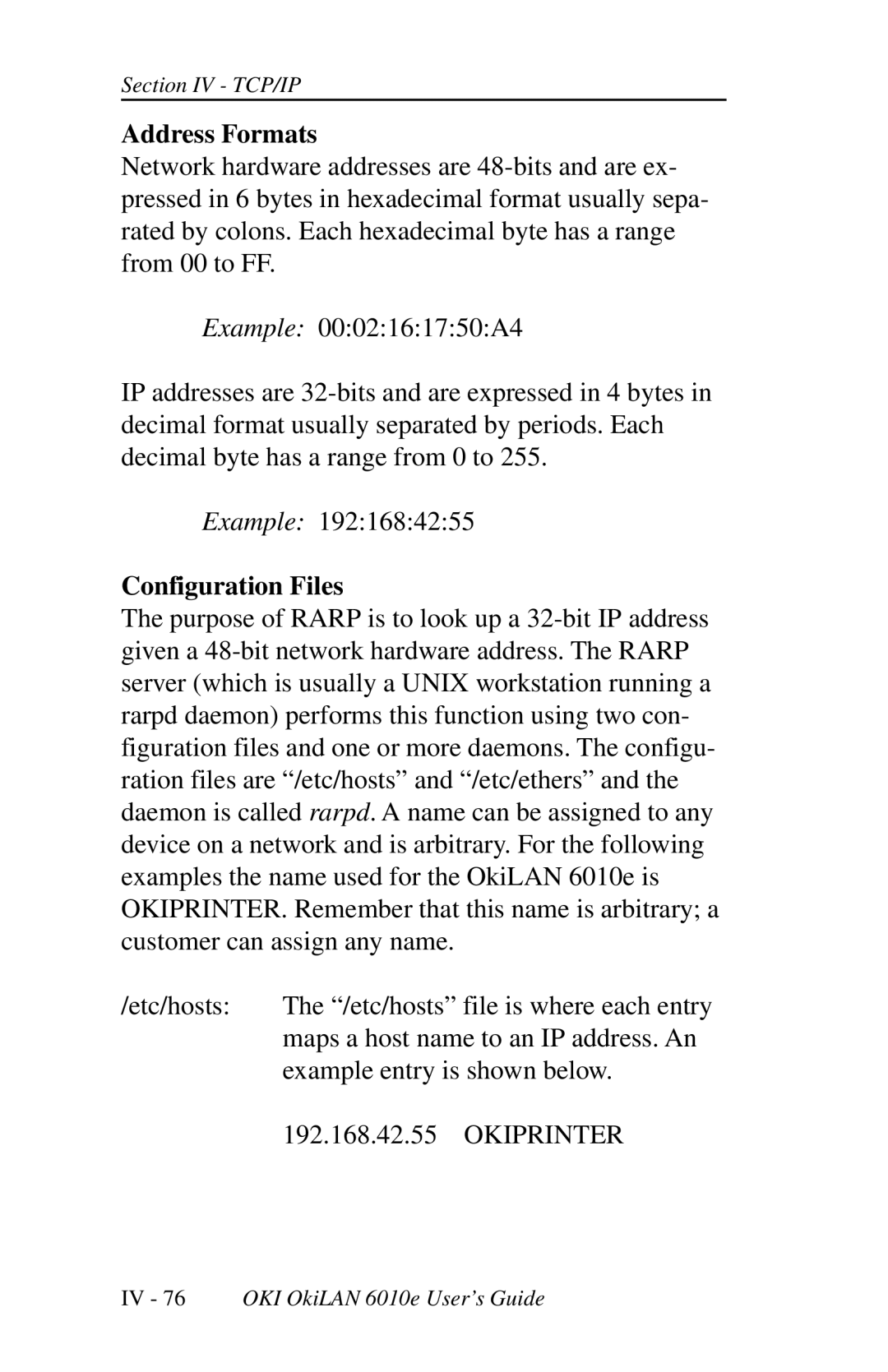
Section IV - TCP/IP
Address Formats
Network hardware addresses are 48-bits and are ex- pressed in 6 bytes in hexadecimal format usually sepa- rated by colons. Each hexadecimal byte has a range from 00 to FF.
Example: 00:02:16:17:50:A4
IP addresses are 32-bits and are expressed in 4 bytes in decimal format usually separated by periods. Each decimal byte has a range from 0 to 255.
Example: 192:168:42:55
Configuration Files
The purpose of RARP is to look up a 32-bit IP address given a 48-bit network hardware address. The RARP server (which is usually a UNIX workstation running a rarpd daemon) performs this function using two con- figuration files and one or more daemons. The configu- ration files are “/etc/hosts” and “/etc/ethers” and the daemon is called rarpd. A name can be assigned to any device on a network and is arbitrary. For the following examples the name used for the OkiLAN 6010e is OKIPRINTER. Remember that this name is arbitrary; a customer can assign any name.
/etc/hosts: | The “/etc/hosts” file is where each entry |
| maps a host name to an IP address. An |
| example entry is shown below. |
| 192.168.42.55 OKIPRINTER |
IV - 76 OKI OkiLAN 6010e User’s Guide
